
Our profession regularly goes through quite serious fits and spurts. Constantly changing and reacting to the whims of those in power, regardless of the chaos it causes. It is something we’ve learnt to grimly put up with.

To the more experienced in the profession, the fear is, it is creating a much more “monotone” education system; a non-creative, dull, top-down model, which surely will not last as it doesn’t prepare children adequately for real/working life and more importantly besides, is not cost effective.
A cynic could well say our jobs are now increasingly about the passing of tests and no more. The child passes a test, then another, and then another…while we, the deliverer of the process, are rewarded accordingly on those results. The child learns that life is simply about jumping through hoops; passing tests, looking good, deferring to those above, oh…and getting into debt. Quite massively into debt in fact, then, to go into a job that quite possibly didn’t need the qualification they worked hard for in the first place.
But that’s what a cynic would say.

Still, it helps augment the housing market; good results mean good house prices, so why complain?
Well, let’s have a think about things. Isn’t it the case that with all this results grabbing stuff we’re forgetting there’s a human in there somewhere?
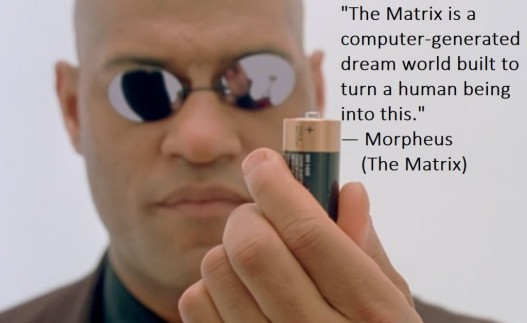
Could it be the case that with the everyday classroom grind of today – the drive to get “results” – we fail to engage the children in a more humane way and, more importantly, fail to grasp that some children, maybe a lot more than we’d care to admit, find our school culture rather unpleasant?
So here’s something different to think about, linking elements of biology, SEN, psychology and a few others with our everyday practice. A new way at thinking about the profession and its difficulties perhaps?

This short (uh…’ish) piece gives you a rough idea of what current research is telling us about the brain and the possible roots behind the “idiosyncratic” behaviour of certain children we’re sure we can think of from our own experiences in classrooms. Do we think we’re doing the right thing? Or could we take a different professional stance to the way we operate?
Here goes…
80% of what we have learnt about the brain has been in the last 15 or so years.
Essentially there are three layers of the brain.

These are referred to as “The triune” – The 3 developmental stages of the brain. The reptilian brain (The brain stem), the mammalian brain (Limbic system) and neo-cortex as you can see in the diagram above.
But first, before we go into these three systems, look at this MRI scan showing the difference between the brain growth of a “normal” three year old child and one that has been neglected.
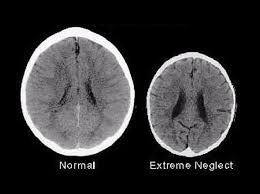
Professionally this sort of thing can be self-evident though one must be wary not to jump to conclusions. Some less able children sometimes do seem to have smaller heads/skulls and the media over the years have used images such as the one above. For us though, this can link in with unusual phenomena such as children experiencing things as nosebleeds once they finally enter a stimulating environment. Is this because of sudden and rapid brain development?
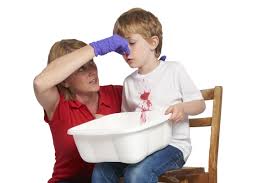
The next few paragraphs will link a little more directly with the pictures next to them. While far from perfect, this will help give you a good, rough guide of what the brain is all about and hopefully get you thinking about what you’re doing in the classroom.
So starting with the reptilian part of the brain; this part is online at birth and rapidly develops between 0-6 months. The Mammalian brain comes online at around 6 months and rapidly develops between 6-12 months. The neo-cortex comes online at around 12 months and rapidly develops between 12-18 months.
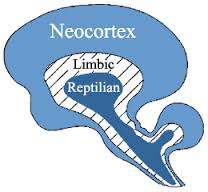
1) The Reptillian brain links the brain to the body via the spinal column and it controls the basic functions of a human, for example heart rate, breathing, body temperature, balance etc. It literally is the primordial “reptile” inheritance from our distant past. This is based purely on instinct, but as you will see with the Amygdala soon, it does have its own “memory system” which is not efficient.
This links with the phenomena – though much open to debate and with many still unconvinced – on how if the body does indeed have memory, then there are transplant cases where the receiver of a new heart or kidneys suddenly start having dreams or nightmares linked with the experiences of the donor.

-The Cerebellum is at the back of the brain which is responsible for motor movements but it also gets emotions going when the body starts moving. It is essentially the system that deals with the basic emotional responses; as in fight/flight and so on.
This coincides with classic moments caught on things such as Youtube where people can lash out if someone surprises them in some way when initially meant as a joke. In the sports world, some athletes, for example boxers, have been known to start biting when they’re under extreme stress or aware they are losing the contest. The Mike Tyson/Evander Holyfield contest being the most famous example.


-The Amygdala sits in the Limbic system but is part of the reptillian brain as it starts working straight away. It is a memory system but when it evokes a memory we don’t realise we’re having a “memory”. It records bad experiences and trauma and brings them back to the present subconsciously when we have a similar experience. For example as a young child someone might have got scared about a milk bottle smashing and the milk being spilt. As an adult if someone drops a milk bottle and it smashes the adult may feel scared but not know why. This is also responsible for the fight/flight/freeze response when in perceived danger.
Another more familiar example for teachers might be noting how some children are terrified of the swimming pool. Perhaps the child had a bad bathing experience when very young?
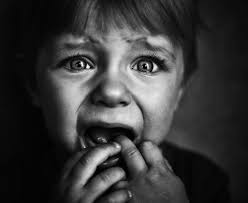
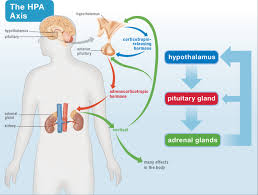
-The HPA axis is a system that goes round the body. When there is a perceived threat the Hypothalamus sends a message to the pituitary gland. This then sends a message down the body to the adrenal glands in the stomach. This then sends a message back to the brain asking if the threat is real. The brain then deciphers if the threat is indeed a threat or if it’s okay.
Hence our “gut response” to things. This is also important when understanding other cultures. We talk of the “heart” while for others it’s the stomach.
For example after the Battle of Isandlwana there was outrage when the victorious Zulu’s slit the bellies of all the dead open. For them this was honouring the dead, letting their spirits go free.

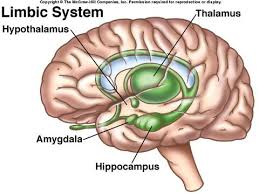
2) The Mammalian brain or Limbic system is the middle part of the brain which regulates raw emotion, social responses and it is where the 8 seeking circuits of the brain are based. The 8 seeking circuits are seeking, rage, fear, panic/loss, play, mating, care/love and lust.
This is still “subconscious” and has important links with Freud’s notion of the “id”.
Regardless of your feelings towards Freud, it is the key part of where attachment begins and is the fundamental part of what makes us, as mammals, what we are. For us as apes, it is key to where mirror-neurons are found, mostly on the right side of our brain.

It is key to our sense of rule making (and thus societal rules), which are naturally developed much more so with us as apes than other mammals.
Leading to…
3) The higher part of the brain is called the neo-cortex and is the thinking brain. The neo-cortex is split into a right and left hemisphere. The right is more connected to the rest of the brain and this regulates creativity, empathy and mature emotions. The left brain regulates things like numbers, reading, facts, routine etc. The two hemispheres are connected together by a little bridge known as the Corpus Callosum.

-The Anterior Cingulate is the receptor in the brain that lights up when we have an empathic response. The flip side to this is the Nucleus Accumbens. This is a pleasure seeker and lights up when we have pleasure. For some traumatised children this can light up when someone is in pain and hence look to inflict pain themselves. This is why we have sociopaths, whom instead of helping another when distressed can show no empathy towards that individual at all.
At its best, this is why the Germans have “schadenfreude”. Essentially though it means an individual has an anti-system of the Nucleus Accumbens meaning the “mirror-process” which is so essential to us as an empathising ape has not developed. This can create a sense of isolation or “catastrophic aloneness” which can be an issue.

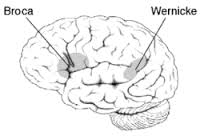
-The Broca’s area of the brain is where language is produced from. The Wernicke’s area is where language is received. (Or another way of looking at it is Wernicke’s area for comprehension and Broca’s for speech production).
There can clearly be difficulties with children in school where one area has developed well and another has not. A key example it seems is with certain “autistic like” children who clearly can grasp the structure of language very well but can in no way focus on or process the “rhetorical” nature of language. Language is not fixed of course, there always needs to be an internalised frame of reference linking with a sense of shared experiences. If this is not established, the child will find it very hard to communicate effectively.
Generally the left hand side of the brain, in regards to language functions picks up much more on noting sound changes, inflection, voice tone and the meanings of words while the right side is context. So as has been seen, damage to the right side of the brain can lead to people struggling to understand jokes, innuendo, metaphors , satire or the gist of a piece of prose.
Basically, different language functions reside in different parts of the brain.

The brain and chemicals…
-Oxytocin and opioids are the chemical the brain gives out in love. It’s the love chemical. When we are in a loving relationship with someone the feeling we get of ‘feeling good’ is because our brain has released oxytocin and opioids.
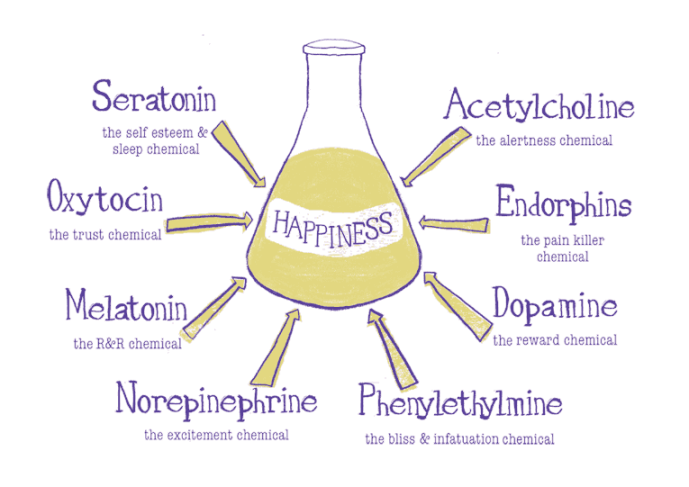
-Dopamine is another feel good chemical that works in relationship. The difference being that instead of it being a love chemical it works more as a working together chemical. Those moments we have where we “click” with someone and feel we can achieve anything, that’s dopamine. An artificial example, prevalent much more in society today is cocaine usage, but very importantly the feeling does not last as long, hence the withdrawal issues and addiction – the need to have more.
During the riots of 2011 many, as in the rioters themselves, would have experienced a significant rise in dopamine levels. An important point to mull over when thinking about people getting carried away.
-Cortisol is an adrenaline based chemical that the brain releases when under threat or stressed. The right amount of Cortisol can push a person on but too much can leave a person frozen, they can’t think straight and incredibly become stressed and angry; it essentially shuts down the frontal lobes. For teachers this can be a major issue today, while some stress is good, it fires up the system as it were, constant stress is not…
It’s the Amygdala part of the brain that produces Cortisol, which links directly with anxiety attacks, often linking with previous experiences. Many teachers suffer something like this of course prior to an OFSTED inspection.
-Acetylcholine is the chemical the brain releases when we have a bereavement and loss. It’s a toxic chemical that shuts the body down yet it can be overridden by oxytocin and opioids. In short a person needs to grieve with another rather than alone.
Some schools have been known to sit the children in circles and “draw” on each other’s back, as a sort of mass-massaging to help produce healthy feelings towards one another. Sounds like a nice idea.
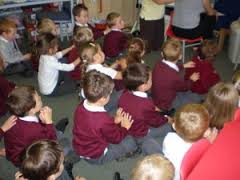
When thinking of chemicals, growth and their emotional well being;
A baby between 0-6 months needs a lot of eye contact, cooing, feeling that their care giver is delighted by them and lots of love. Thus giving them lots of oxytocin and opioids.

A baby between 6-12 months needs to have adventure but with their care giver cajoling them. They need to start taking turns and having someone there to regulate their emotions (hence the problems noted with ADHD children, they’ve never regulated their internal drives). Lots of dopamine for this phase is needed.
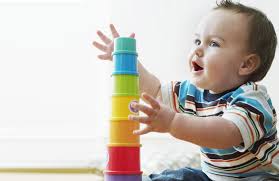
– A baby between 12-18 months needs to start having their thoughts stimulated and made sense of. This is the age of starting to understand so things need to be named and described like ‘big stone’ or ‘hot water’ etc.
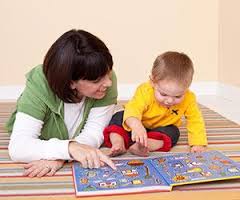
In short…children need well formed relationships and lots of play.
Is this a major potential issue for the UK with the rise of nursery care and the issues around it over finance?
Is it really fair Reception teachers are expected to socialise, or help with socialising small children when it should already have happened?
Is it the sad truth, that by the age of 3 the damage has largely, already been done?
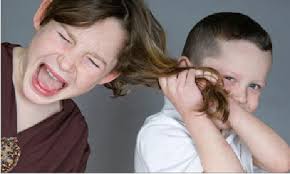
Now let’s move onto the three main attachment types and see how this can all link up.

These were originally listed by John Bowlby as simply “secure/insecure” but Mary Ainsworth took the idea further and developed it them into;
- Avoidance
- Ambivalent
- Disorganised
Others are seeking to add newer ones, but these should help us as practitioners get a basic sense of what we encounter everyday in some classes.
Essentially anxiety develops from some sort of neglect. This in truth can lead to very complex reasons for certain forms of behaviour. Hence the rise of psycho-analysis.

Let’s look at the three types noted here, but remembering these are basic models to help us rather than in any way being a set “truth”.
With each image here showing the relationship between carer (teacher) and child, comes a basic triangular diagram, from Heather Geddes’ “Attachment in the classroom” to help give a sense of what’s happening.
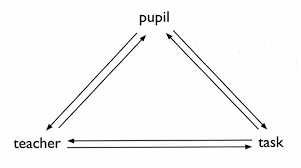
“Secure” is shown first to help as a guide, a securely attached child is one that has had enough from their caregiver to enable them to feel secure within themselves and their caregiver. Winnicott’s theory says that if the caregiver can get it right 33% of the time then that’s good enough – this is important to stress.

-Avoidance “attachment”. (As in “I’m okay you’re not okay”)
A child with an avoidant attachment is one that has had their needs ignored too much by their caregiver as a young baby (so importantly, below 33% as noted earlier). This leads the child to not engage with others because it is felt they do not offer anything. This might manifest as a child in class sitting on their own working, but they don’t socialise. There are 3 stages to this attachment – protest, despair and finally detachment.
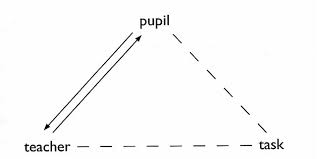
-Ambivalent “attachment”
A child with an ambivalent attachment is one that has had major inconsistencies in their young life from their caregiver. They sometimes show love, sometimes ignore the baby. One day they may laugh and have a nice time because the baby threw something, the next day the baby may be scolded for doing exactly the same thing. This can lead the child to being very overbearing and desperately trying to attach to others which ultimately can lead to rejection. A child with an ambivalent attachment finds it very hard to regulate their emotions.
This also means the child will want to explore the world but doesn’t want to leave the parent either, leading to a sense of frustration. This can be key and can often be seen in very wealthy children where the upbringing, while very secure materially, is not emotionally.
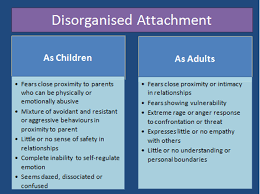
-Disorganised “attachment”.
A child with a disorganised attachment is one that has had a traumatic childhood especially if the trauma has come from the caregiver. This can be as appalling as a child being abused one day, the next day rewarded as if nothing has happened. This can lead to all sorts of atrocities in later life if not treated as they have absolutely no empathy about them at all.
A triangular diagram isn’t really necessary as the results are obvious, but the chart above is of use. Such children provide the major challenges for a classroom as we know too well!
-It is felt that 60% of children in the UK have “secure attachments.” That’s not a large percentage really.
Worryingly 75% of that 60 can be affected when the parents separate…
Is toileting today an indication of attachment issues with children? ATL in fairness over the years have championed this issue somewhat, but it is becoming a concern for many of us.
Is it also the case, equally worryingly, that children are in some way becoming “de-tached” from their bodies? Have you noticed how more and more people seem to be walking into you these days? (Admittedly sometimes on a device of some description).

So to conclude – and we hope you’ve found this entry helpful – a few examples from history to think about.
Adolf Hitler
- Regularly beaten by his father.
- Spoilt by his mother.
- Jewish grandfather? His father was illegitimate.
- 3 siblings had died.
- Orphaned at 18
- Coprophiliac? This an aspect of needing to…
- Control issues

Saddam Hussein
- Father left when born.
- Step-father beat him regularly.
- Eventually put with his Granddad. Was taught a violent way of life. (This citing issues with modern children who know nothing but violent computer games…experiencing no empathy)

Joseph Stalin
- 2 siblings had died.
- Father was an alcoholic who left regularly; for good at age 5.
- Mother put him in the clergy.
- Constant return of abusive father.
- Control issues developed…Stalin wanted to be a poet.

Ian Brady
- Mum was single, never met Dad.
- Left alone all day, suffered extreme neglect.
- Adopted after 4 months, though still seen by mother.
- Became fascist, “father” replacement?
- Clearly demonstrated “disorganised attachment” characteristics.

And on that happy note…bye!